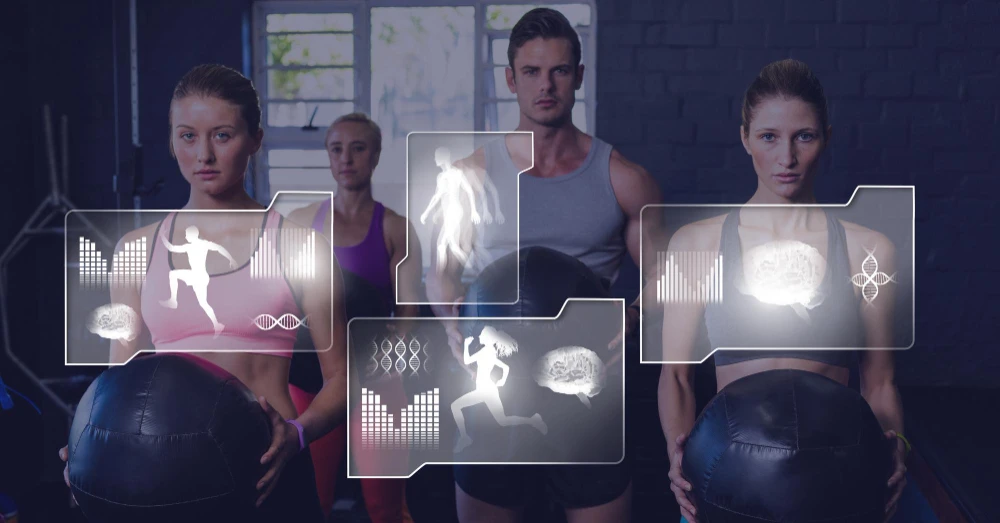Are you ready to take your training program to the next level? Designing an advanced training program requires careful planning and consideration of key factors.
In this dynamic and fast-paced business environment, organizations need to ensure that their employees are equipped with the latest knowledge and skills. Whether you’re aiming to enhance technical expertise, foster innovation, or improve leadership capabilities, developing an advanced training program is the way to go.
This comprehensive guide will walk you through the essential considerations and principles to keep in mind while designing an advanced training program. From identifying the specific goals and objectives to selecting the most effective delivery methods, we will explore the key elements that will make your training program a resounding success.
So, let’s dive in and unlock the secrets to designing an advanced training program that will take your organization to new heights!
The Importance of an Advanced Training Program
Investing in an advanced training program is crucial for organizations looking to stay ahead in today’s competitive landscape. Such programs not only enhance the skills and knowledge of employees but also contribute to overall organizational growth. Here are a few reasons why an advanced training program is essential:
- Enhanced Employee Performance
An advanced training program equips employees with advanced skills and knowledge, enabling them to perform their tasks more efficiently and effectively. This leads to increased productivity and improved job satisfaction.
- Retention and Engagement
Offering advanced training opportunities demonstrates an organization’s commitment to employee development, which in turn boosts employee morale, engagement, and loyalty. Employees are more likely to stay with an organization that invests in their growth.
- Staying Competitive
In today’s rapidly evolving business landscape, organizations need to keep up with the latest industry trends and technologies. An advanced training program helps employees stay up-to-date with the latest advancements, ensuring that the organization remains competitive.

Assessing Training Needs and Objectives
Before designing an advanced training program, it is crucial to assess the training needs and objectives of your organization. This involves identifying the skills and knowledge gaps that need to be addressed. Here’s how you can go about it:
- Conduct a Training Needs Analysis
A training needs analysis involves evaluating the current skills and knowledge levels of employees. This can be done through surveys, interviews, and performance evaluations. By identifying the gaps between desired and existing skills, you can determine the training needs of your organization.
- Align Training Objectives with Organizational Goals
The training objectives should align with the overall goals of your organization. For example, if your organization aims to improve customer service, the training program should focus on developing customer service skills.
- Prioritize Training Areas
Once you have identified the training needs, prioritize them based on their impact on organizational goals and employee performance. This will help you allocate resources effectively and design a targeted training program.

Identifying Target Audience and Learning Styles
To design an effective advanced training program, it is essential to understand the target audience and their preferred learning styles. Consider the following factors:
- Demographics
Identify the demographic characteristics of your target audience, such as age, educational background, and job roles. This information will help you tailor the training content and delivery methods to suit their needs.
- Learning Styles
People have different learning styles, including visual, auditory, and kinesthetic. Understanding the preferred learning styles of your target audience will enable you to design training materials that cater to their individual preferences.
- Engagement Level
Assess the level of engagement of your target audience with training programs. Are they more likely to actively participate in hands-on activities or prefer self-paced online modules? This information will help you design a training program that keeps participants engaged and motivated.
Key Considerations for Designing an Effective Training Program
When designing an advanced training program, there are several key considerations to keep in mind. These considerations will ensure that your program is effective and delivers the desired outcomes. Here are some essential factors to consider:
- Clear Learning Objectives
Clearly define the learning objectives of your training program. This will guide the development of training materials and help participants understand what they will gain from the program.
- Relevance to Real-World Scenarios
Make sure the training content is relevant to real-world scenarios and challenges that participants may face in their roles. This will enable them to apply the knowledge and skills acquired during the training to their day-to-day work.
- Interactive and Engaging Activities
Incorporate interactive and engaging activities into your training program to enhance participant involvement and retention of information. This can include group discussions, case studies, role-plays, and hands-on exercises.
- Feedback and Assessment
Regularly gather feedback from participants to evaluate the effectiveness of the training program. Assess their progress through quizzes, assignments, or practical assessments. This will help you identify areas for improvement and measure the impact of the training.
Principles of Adult Learning Theory
To design an effective advanced training program, it is essential to understand the principles of adult learning theory. Adults have unique learning needs and preferences, and incorporating these principles into your program will enhance its effectiveness. Here are a few key principles to consider:
- Relevance
Adults prefer learning that is relevant to their personal and professional goals. Ensure that the training content aligns with their needs and addresses real-world challenges.
- Self-Directed Learning
Adults are motivated to learn when they have control over their learning journey. Provide opportunities for self-directed learning, such as online resources or self-paced modules.
- Active Participation
Adults learn best when they actively participate in the learning process. Incorporate interactive activities, discussions, and problem-solving exercises to encourage active engagement.
- Practical Application
Adults learn by applying their knowledge and skills in practical scenarios. Provide opportunities for participants to practice and apply what they have learned through simulations, case studies, or on-the-job assignments.

Incorporating Technology in Advanced Training Programs
In today’s digital age, technology plays a crucial role in advanced training programs. Leveraging technology can enhance the learning experience, increase accessibility, and improve engagement. Here are a few ways to incorporate technology into your training program:
- E-Learning Platforms
Utilize e-learning platforms to deliver training content online. This allows participants to access the materials at their convenience and pace.
- Virtual Reality (VR) and Augmented Reality (AR)
Incorporate VR and AR technologies to provide immersive and interactive learning experiences. This can be particularly useful for technical training or simulations.
- Gamification
Gamify your training program by introducing game-like elements such as leaderboards, badges, and rewards. This increases motivation and engagement among participants.
- Mobile Learning
Make training materials accessible on mobile devices, allowing participants to learn on the go. This flexibility enables continuous learning and reinforcement of concepts.
Choosing the Right Training Delivery Methods
Selecting the appropriate delivery methods for your advanced training program is crucial to its success. Different methods suit different learning objectives and target audiences. Here are a few popular training delivery methods to consider:
- Instructor-Led Training (ILT)
ILT involves face-to-face sessions conducted by an instructor. This method allows for immediate feedback and interaction, making it suitable for complex topics or skill development.
- Virtual Instructor-Led Training (VILT)
VILT delivers training remotely through virtual platforms. It provides the benefits of ILT while eliminating geographical constraints and reducing costs.
- Self-Paced Online Learning
This method allows participants to access training materials at their convenience and progress at their own pace. It is suitable for individuals who prefer autonomy and flexibility in their learning journey.
- Blended Learning
Blended learning combines various delivery methods, such as online modules, virtual sessions, and face-to-face interactions. It offers a balanced approach that caters to different learning preferences.
Developing a Comprehensive Training Curriculum
A well-designed and comprehensive training curriculum is essential for an advanced training program. It provides a structured framework that ensures the systematic development of skills and knowledge. Here are key steps to develop a comprehensive training curriculum:
- Define Learning Paths
Identify different learning paths based on job roles, skill levels, or career progression. This will help participants navigate through the training program based on their specific needs.
- Content Development
Develop training materials that align with the defined learning paths. Include a mix of theoretical concepts, practical exercises, and assessments to facilitate effective learning.
- Sequencing and Progression
Determine the sequence and progression of training modules to ensure logical flow and progressive skill development. Start with foundational concepts before moving on to more advanced topics.
- Continuous Improvement
Regularly review and update the training curriculum to incorporate new industry trends, technologies, and feedback from participants. This ensures the program remains relevant and up-to-date.
Evaluating the Effectiveness of the Training Program
Evaluating the effectiveness of an advanced training program is crucial to measure its impact and identify areas for improvement. Here are a few evaluation methods you can consider:
- Participant Feedback
Gather feedback from participants through surveys or interviews to assess their satisfaction with the program, relevance of the content, and effectiveness of the delivery methods.
- Assessment Results
Analyze the results of assessments, quizzes, or practical assignments to measure participant knowledge and skills acquisition. Compare the results with pre-training assessments to evaluate the program’s effectiveness.
- On-the-Job Performance
Monitor the participants’ on-the-job performance to determine if they have successfully applied the skills and knowledge acquired during the training. This can be done through performance evaluations or supervisor feedback.
- Business Impact
Measure the impact of the training program on organizational goals, such as increased productivity, improved customer satisfaction, or reduced errors. This provides a holistic view of the program’s effectiveness.
Let’s Sum Up
Designing an advanced training program requires careful planning, consideration of key factors, and adherence to adult learning principles. By assessing training needs, identifying target audiences and learning styles, and incorporating technology, you can create a program that enhances employee performance and drives organizational growth.
Remember to choose the right delivery methods, develop a comprehensive training curriculum, and continuously evaluate the program’s effectiveness. By following these key considerations and principles, you can build a successful advanced training program that equips your employees with the skills and knowledge needed to thrive in today’s competitive business environment.
So, are you ready to take your training program to the next level? Start designing your advanced training program today and unlock the potential of your organization!



